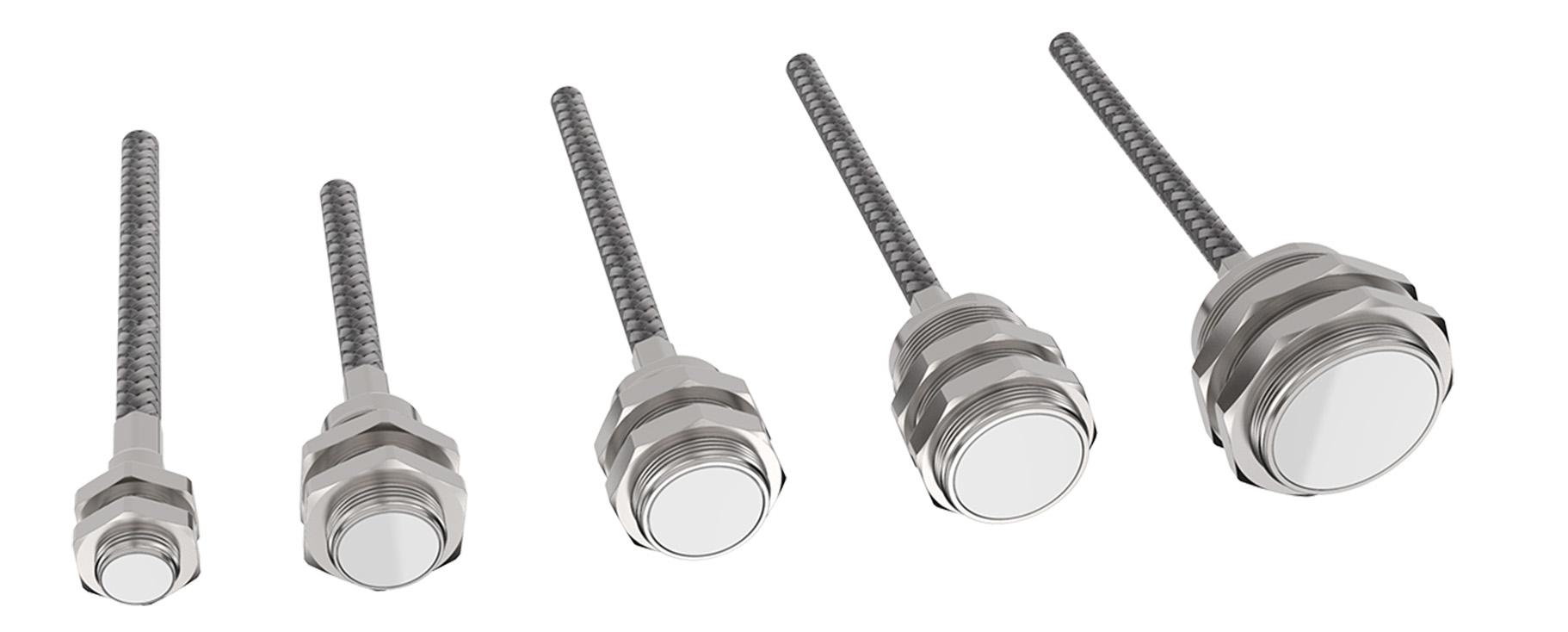
15.02.2024
■ Heavy-duty design
■ Protection class IP68/ IP69K
■ With polyurethane or steel flex cable protection
■ Pressure-tight design
■ For difficult applications
With the new CT series, eddylab GmbH is expanding its product portfolio in the field of eddy current sensors for particularly harsh environmental conditions. The CT sensors have a special pressure-tight seal for the ceramic sensor element and the cable outlet. This allows the sensors to be installed completely, including the cable feed, in the pressure area. Thanks to the use of zirconium oxide on the front, the CT sensors can withstand pressures of up to 220 bar.
High protection for different operating conditions
The CT eddy current sensors use an RG316 coaxial cable, which can optionally be protected by two different hoses. The sensor can be equipped with a polyurethane hose for protection against liquids, dirt and light pressure.
For heavy-duty applications with temperatures up to +200 °C, eddylab offers a hard-wearing steel flex hose consisting of a stable metal braid and a PTFE inner hose. In this way, the otherwise delicate coaxial cables of the eddy current sensors are reliably protected against damage such as cable breakage, damage to the outer sheath and tearing.
Safe installation for precise measurement results
The sensor heads of the CT eddy current sensors are ferrite-focused in the ceramic element. This makes them extremely insensitive to other metallic objects close to the measuring field, they can be installed flush and thus guarantee precise measurement results.
Monitoring in the high temperature and pressure range
eddylab GmbH guarantees pressure and media tightness over the entire temperature range. This allows, for example, use in subsea applications for monitoring drives in the oil production industry, tidal power turbines or in high-pressure pumps whose screw conveyor must be reliably monitored for deflection and concentricity.
Click here for further information!